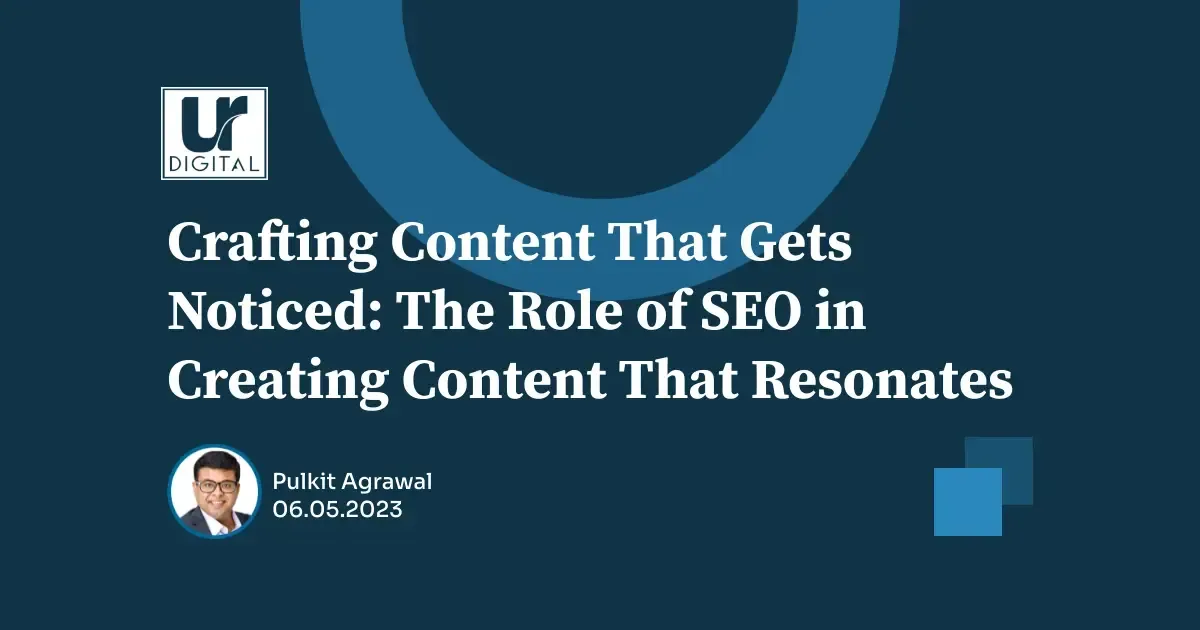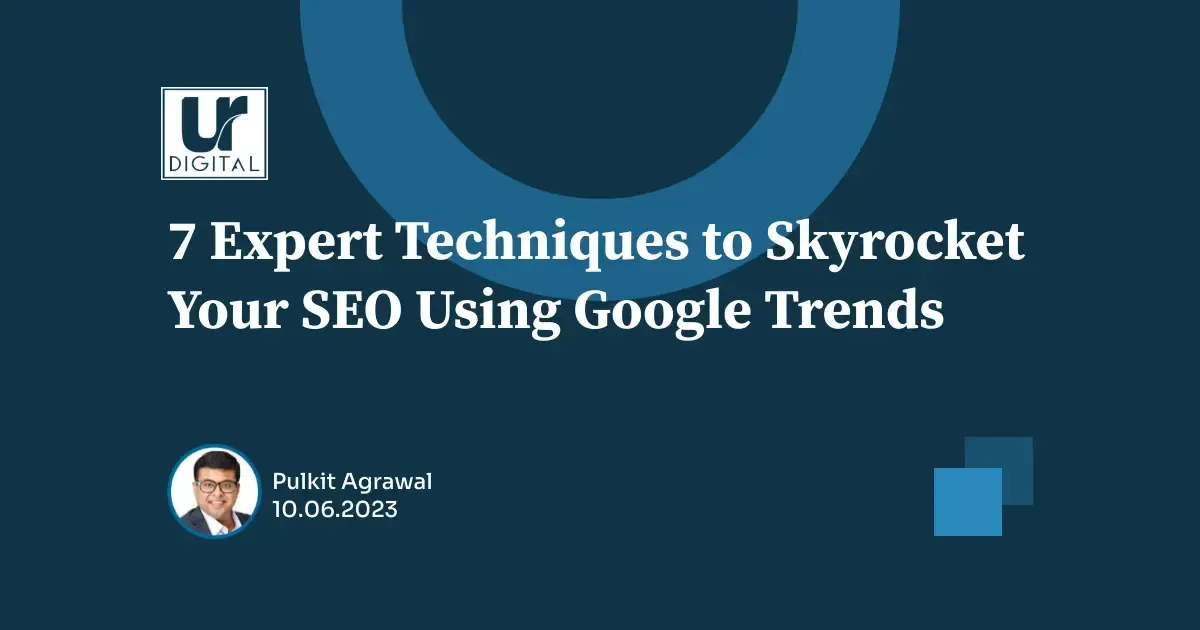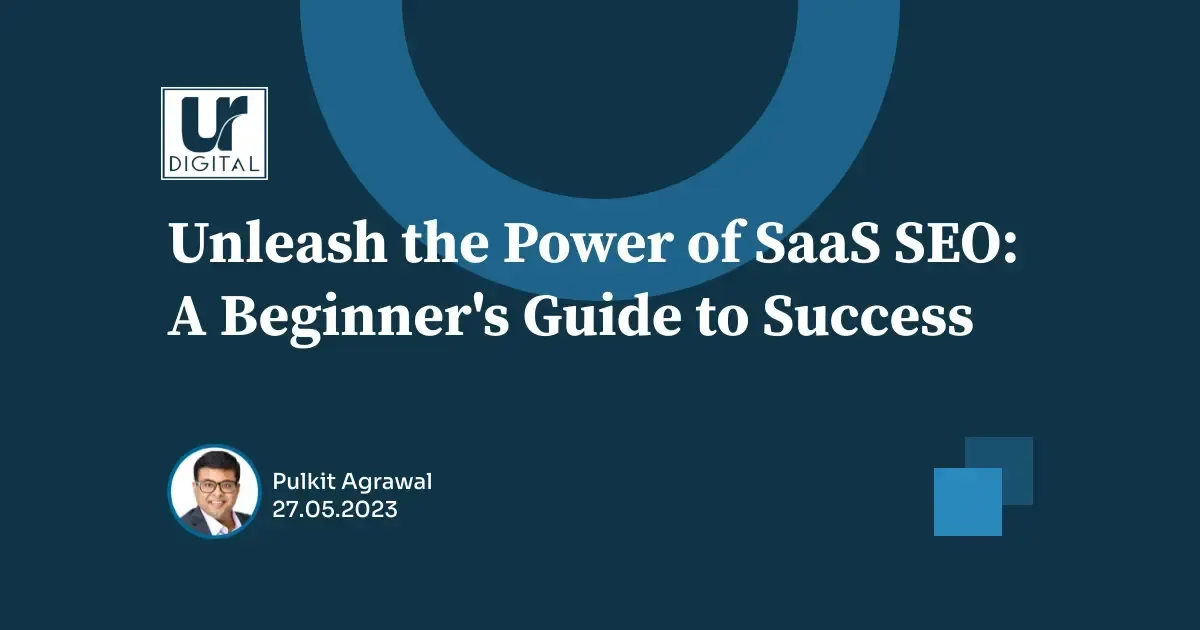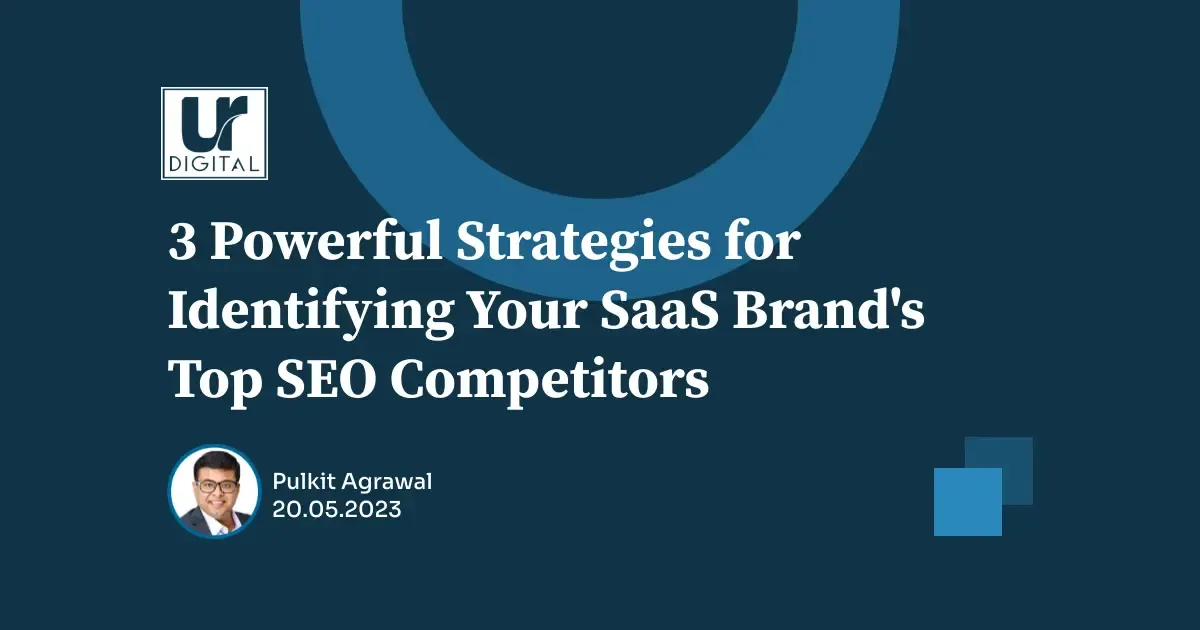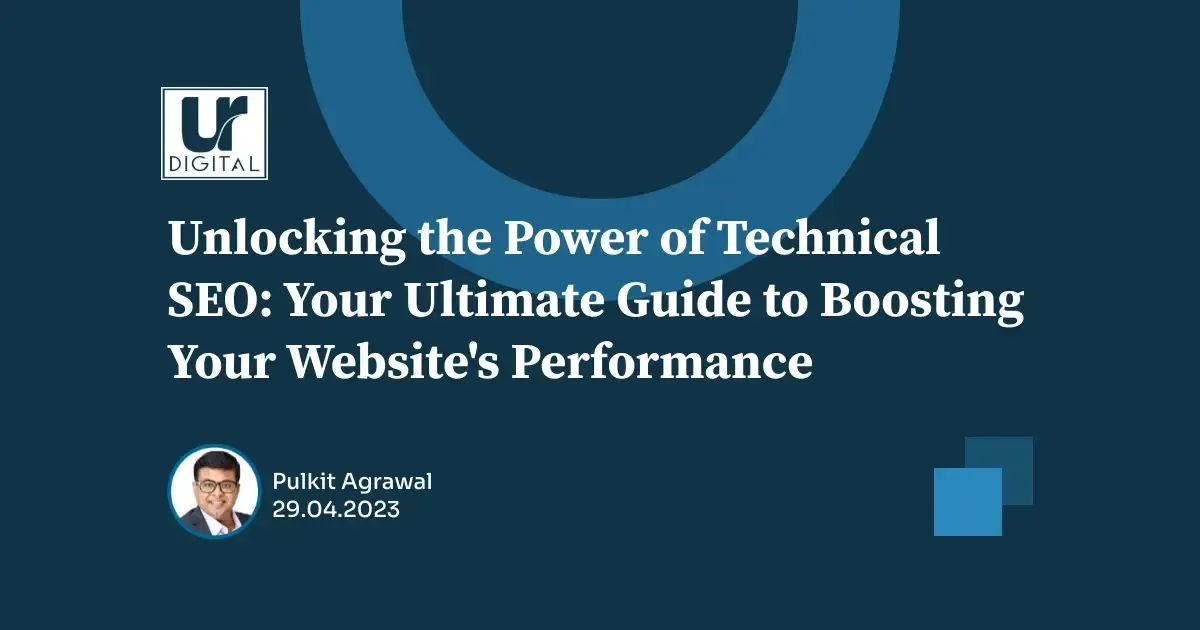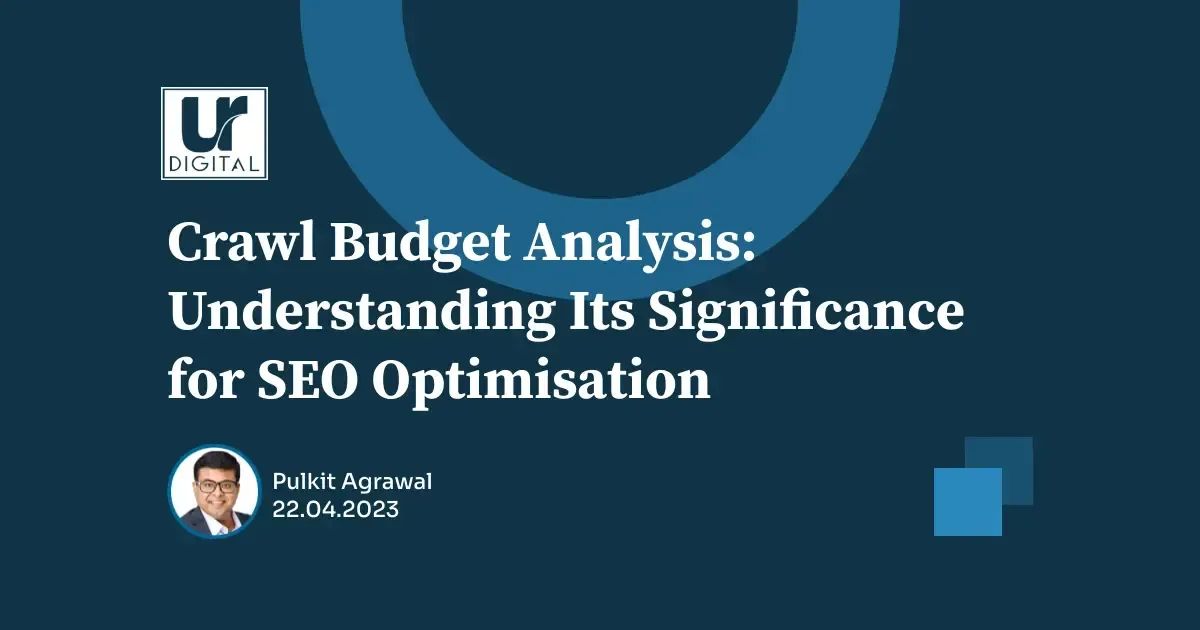Optimise Your Site for Better Findability: 11 Tips for SEO Success
Consider Sharing
In today's digital world, having a website is like having a storefront for your business. But just like a brick-and-mortar store, if your website is hidden in a back alley, it won't attract many visitors. That's where website optimisation comes in. Optimising your website for better findability can improve your search engine rankings, attract more relevant traffic to your site, and engage your target audience more effectively.
In this blog post, we'll explore the top strategies for website optimisation, including keyword research, on-page optimisation, technical optimisation, link building, and more. Whether you're a seasoned website owner or just starting out, these tips will help you take your website to the next level and achieve online success.
11 Ways To Optimise Your Website
1. Conducting Keyword Research
Keyword research refers to identifying the search terms people use to find information online. Conducting keyword research is an important part of website optimisation because it helps you understand what your target audience is searching for and how to tailor your content to their needs.
Identifying the appropriate keywords can improve your website's search engine rankings and attract relevant traffic. To select the best keywords, it's vital to opt for the most relevant ones with high search volume and aren't overly competitive.
Several tools, such as Google Keyword Planner, SEMrush, and Ahrefs, are available for keyword research. They can help you identify keywords related to your business, determine their search volume, and analyse their competition level.
Best keyword selection practices include conducting thorough research, focusing on long-tail keywords, and considering user intent. Long-tail keywords are longer, more specific phrases that are less competitive but have higher conversion rates. Understanding user intent involves understanding why someone searches for a particular keyword and tailoring your content to meet their needs.
2. On-Page Optimisation
On-page optimisation involves optimising individual pages on your website to improve their search engine rankings and relevance. On-page optimisation includes several factors, like title tags, meta descriptions, header tags, content and image optimisation, and internal linking.
- Title tags are the headlines that appear on search engine results pages (SERPs) and should accurately reflect the page's content.
- Meta descriptions are short snippets of text that appear below the title tag and provide a brief summary of the page's content.
- Header tags, also known as H1, H2, and H3 tags, provide structure and hierarchy to your content, making it easier for search engines to understand the content of your page.
- Content optimisation involves incorporating relevant keywords into your content, ensuring it is high-quality and engaging.
- Image optimisation includes using descriptive file names and alt tags to help search engines understand the content of the images on your page.
- Internal linking involves linking to other relevant pages on your website to improve navigation and user experience.
3. Technical Optimisation
Technical optimisation refers to improving the technical aspects of your website to boost its search engine rankings and enhance user experience. It includes several factors, such as website speed and performance, mobile optimisation, sitemap creation and submission, robots.txt file optimisation, and schema markup.
- Website speed and performance are important factors in website optimisation because they impact user experience and search engine rankings.
- Mobile optimisation ensures your website is optimised for mobile devices, including smartphones and tablets.
- Sitemap creation and submission involves creating a sitemap of your website's pages and submitting it to search engines to help them understand the structure of your website.
- Robots.txt file optimisation involves creating a file instructing search engines on which pages to crawl and which to exclude from their index.
- Schema markup includes adding structured data to your website to help search engines understand the content of your pages and display rich snippets in search results.
4. Link Building
Link building is the process of acquiring links from other websites to your website. Links are essential factors in website optimisation because they signal to search engines that your website is a trusted and authoritative source of information.
There are two main categories of links that are relevant to websites: internal links and external links. Internal links connect one page on a website to another page on the same website. In contrast, external links are created when other websites link back to your website.
Internal links are beneficial because they enable visitors to navigate through the website and assist search engines in comprehending the site's hierarchy and content. On the other hand, external links serve as endorsements of the website's content, indicating to search engines that other websites view it as valuable and credible. This can enhance the website's search engine rankings and attract new visitors.
When it comes to link building, quality is more important than quantity. You should always acquire links from reputable and authoritative websites within your industry. Link-building strategies include:
- Conducting thorough research to identify relevant websites.
- Creating high-quality content that other websites will want to link to.
- Guest blogging on other websites.
- Reaching out to other websites to request links.
- Strategically using anchor text.
- Avoiding link schemes and black hat SEO tactics.
It's also important to regularly monitor your link profile and disavow any spammy or low-quality links that could harm your website's search engine rankings.
5. Local SEO Optimisation
Local SEO optimisation is crucial for businesses catering to customers in their local vicinity. It involves optimising your website and digital presence to appear higher in local search results. By implementing local SEO strategies, you can increase your visibility and attract more potential customers in your area. It helps in improving your ranking in local search engine result pages (SERPs), which in turn can drive more traffic to your website and increase sales.
- One of the key factors in local SEO is optimising your Google Business Profile (GPB) formerly Google My Business listing. GBP is a free tool that allows businesses to manage their online presence across Google, including search results and Google Maps. Optimising your GBP listing can improve your local search rankings and attract more local customers.
- To make the most out of your Google Business Profile listing, you must ensure that the information you provide is accurate and current. This includes essential details such as your business name, address, phone number, and website. Furthermore, uploading pictures and videos that showcase your business and its offerings can help grab the attention of potential customers and highlight your products or services. It's important to keep your GBP listing up to date and respond promptly to customer reviews and inquiries.
- Local keyword targeting is a crucial aspect of local SEO. It refers to the practice of targeting keywords that incorporate location-specific phrases. For example, if you are a dentist in Castle Hill, you might target keywords such as "dentist castle hill" or "dentist near me." By using local keywords in your website's content and metadata, search engines can better understand the geographic relevance of your business and match it with relevant local search queries from users. This can help improve your business's visibility and search engine ranking for local searches.
- In local SEO, reviews and ratings play a crucial role in determining the visibility of your business. Positive reviews and high ratings can enhance your local search rankings, and attract more potential customers to your business. Encouraging your customers to leave reviews and responding promptly to any negative reviews or feedback can significantly impact your online reputation and help you build trust with your target audience.
- Creating location-specific content can also help improve your local SEO. This can include creating blog posts, or pages focused on specific neighbourhoods or areas. You can also create content highlighting local events or landmarks relevant to your business.
6. Analytics and Tracking
Measuring your website's performance and identifying improvement areas are critical to the success of your online presence. To accomplish this, analytics and tracking are essential tools. Fortunately, Google Analytics provides a free, powerful solution that offers valuable insights into your website's traffic, user behaviour, and conversion rates.
To get the most out of Google Analytics, you should set up goals and funnels to track specific actions on your website, such as form submissions or product purchases. You should also use parameters to track the effectiveness of your marketing campaigns and conduct regular audits to identify any issues or areas for improvement.
Key metrics to track include traffic sources, bounce rate, time on site, and conversion rate. By tracking these metrics, you can identify which pages on your website are performing well and which need improvement. You can also use these insights to make data-driven decisions about your website and marketing strategies.
7. Content Creation and Marketing
Effective content creation and marketing are crucial for attracting and engaging your target audience. Publishing high-quality and relevant content not only helps to improve your website's search engine rankings but also boosts engagement with your audience. Optimising your SEO content can increase your website's visibility, drive traffic to your site, and ultimately convert more leads into customers.
When creating content, it's important to consider user intent and create content that aligns with your audience's needs and interests. You should also conduct keyword research to identify the keywords relevant to your business and target those keywords in your content.
Effective content distribution is crucial for achieving visibility and engagement online. Content distribution strategies may include social media marketing, email marketing, and guest blogging.
- Social media marketing is a popular method of distributing content through various social media platforms such as Facebook, Twitter, and LinkedIn. Promoting your content on social media can reach a wide audience and generate interest in your brand.
- Email marketing is another effective strategy for content distribution. This involves sending newsletters or promotional emails to your subscribers. Email marketing allows you to target your audience directly, and you can use email campaigns to nurture relationships with your subscribers, promote your content, and drive traffic to your website.
- Guest blogging is a useful method for distributing your content on other websites. This involves writing blog posts for other websites and including links back to your website. Doing so allows you to tap into new audiences and drive traffic to your website. Guest blogging also allows you to establish yourself as an authority in your industry and build relationships with other bloggers in your niche.
Therefore, investing in content creation and marketing is essential for businesses that want to build a strong online presence and establish themselves as industry leaders.
8. Social Media Optimisation
Social media optimisation (SMO) is a vital aspect of promoting your business online and effectively engaging with your audience. It involves optimising your social media profiles and content to enhance visibility and engagement, resulting in better organic reach and increased brand awareness. By incorporating SMO strategies into your online marketing efforts, you can increase your social media presence and foster meaningful interactions with your target audience. This can ultimately lead to improved customer loyalty and increased revenue for your business.
Here are some tips for effective social media optimisation:
- When optimising your social media profiles, use consistent branding across all platforms, including your logo, colours, and messaging.
- Include relevant keywords in your social media profiles and provide valuable information about your business, such as your products, services, and location.
- Use visual content such as images and videos to optimise your social media content, as these tend to perform better on social media than text-based content.
- You should also engage with your audience by promptly responding to comments and messages and sharing user-generated content.
- Analysing your social media metrics, including engagement rate, reach, and follower growth, can help you optimise your social media strategy and create content that resonates with your audience.
9. User Experience (UX) Optimisation
UX optimisation involves enhancing the design and functionality of your website to provide a seamless and enjoyable user experience. This practice helps retain visitors and boosts your site's visibility on search engines.
To optimise user experience, creating a website with a clear and easy-to-navigate layout that enables users to locate the information they need quickly is essential. Additionally, your website should have fast loading times and a responsive design that works seamlessly on all devices, from desktops to smartphones.
Effective UX optimisation also entails using concise and straightforward language, providing clear calls to action, and minimising pop-ups and other distracting elements. Furthermore, incorporating high-quality images and videos can significantly enhance the user experience and add visual appeal to your website.
Optimising your website for better findability is critical for driving traffic and boosting user engagement. By implementing these best practices for UX optimisation, you can improve the overall user experience and increase your website's visibility and search engine rankings.
10. Website Security
Ensuring proper website security is crucial to safeguarding your website from malicious attacks by hackers and malware. Besides protecting your site's integrity, website security impacts its visibility on SERPs. Search engines like Google prioritise websites with robust security features, making them more visible to online searchers. Therefore, maintaining website security can help improve your website's search engine rankings and boost its online presence.
To secure your website, you should use strong passwords and keep your software and plugins up to date. You should also use HTTPS encryption, which encrypts data transmitted between your website and your users' browsers, making it more difficult for hackers to intercept and steal data.
Other best practices for website security include using a firewall, backing up your website regularly, and using a security plugin. It's also important to monitor your website for suspicious activity and have a plan for responding to security incidents.
11. Testing and Iteration
Testing and iteration are two important processes that can help improve the quality of a product or service over time. Testing involves running experiments to gather data on how different product or service elements perform. This can be done through various methods, including A/B testing, user testing, or surveys. By testing different variations of a product or service, you can gather valuable insights into what works and what doesn't, allowing you to make data-driven decisions about improving it.
Once you have gathered data from testing, the next step is to use it to inform your decisions and make iterative improvements to your product or service. Iteration involves making small, incremental changes over time and using data to track the impact of each change. This approach can be particularly effective in identifying and fixing issues that might not have been apparent during the testing phase.
Some best practices for testing and iteration include setting clear goals and objectives, testing one variable at a time, and using data to guide your decisions. Establishing a feedback loop with your customers is also important, allowing you to gather feedback on your product or service and make changes accordingly.
Conclusion
In conclusion, optimising your website for better findability is an essential step in ensuring that your target audience can easily discover your content. By following the tips mentioned in this blog, you can improve your website's visibility in search engine results pages and increase your chances of attracting more traffic and potential customers. Remember, the process of optimising your site for findability is ongoing, and it requires consistent effort and dedication to see significant results. But with patience and persistence, you can achieve better visibility and success for your website.
Author
PULKIT
AGRAWAL
FOUNDER & MANAGING DIRECTOR
Profile
My name is Pulkit Agrawal and I'm the Founder and Managing Director of
UR Digital. I invest my soul and imagination into every client. I have worked across many industries, over the past 15 years and countless highly successful SEO projects and campaigns.
Skills and Achievements
Multi-lingual SEO (English, German, Cantonese, Mandarin and Japanese). Google, Semrush, BEC Australia and LinkedIn certified. Member Entrepreneur Leadership Network. Guest Author Entrepreneur, Semrush & Inside Small Business.
Connect with me on
Consider Sharing
